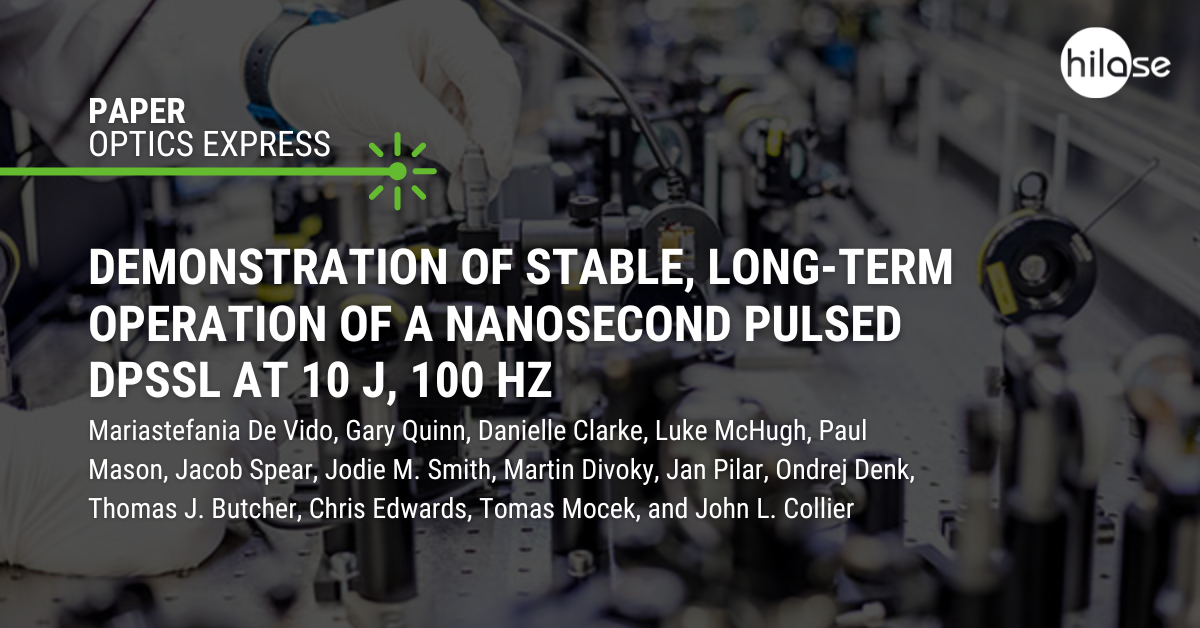Read a paper co-authored by HiLASIANS regarding the construction and operation of the KAZI laser, developed in collaboration between HiLASE Centre and the CALTA team at the Central Laser Facility of the Science and Technology Facilities Council (STFC).

The paper describing its operation is titled Demonstration of stable, long-term operation of a nanosecond pulsed DPSSL at 10 J, 100 Hz and was published in the Optics Express journal. As co-authors, Martin Divoký (team leader of High Energy Slab Lasers), Jan Pilař (senior researcher), Ondřej Denk (optical engineer), and Tomáš Mocek (head of HiLASE Centre) are joined by a group of researchers from STFC: Mariastefania De Vido, Gary Quinn, Danielle Clarke, Luke McHugh, Paul Mason, Jacob Spear, Jodie M. Smith, Thomas J. Butcher, Chris Edwards, and John L. Collier.
We report on stable, long-term operation of a diode-pumped solid-state laser (DPSSL) amplifying 15 ns pulses at 1029.5 nm wavelength to 10 J energy at 100 Hz pulse rate, corresponding to 1 kW average power, with 25.4% optical-to-optical efficiency. The laser was operated at this level for over 45 minutes (∼3 · 105 shots) in two separate runs with a rms energy stability of 1%. The laser was also operated at 7 J, 100 Hz for 4 hours (1.44 · 106 shots) with a rms long-term energy stability of 1% and no need for user intervention. To the best of our knowledge, this is the first time that long-term reliable amplification of a kW-class high energy nanosecond pulsed DPSSL at 100 Hz has been demonstrated.
Furthermore, the paper concludes that with a room-temperature booster pre-amplifier (PA2) in the front-end section, increased efficiency and higher polarization purity can be achieved in the future. In addition, the quality of the near-field profile is also expected to improve with further adjustments, leading to expected future output energy above 10 J. Lastly, scalability of pulse rate beyond 100 Hz is a subject of ongoing research.








